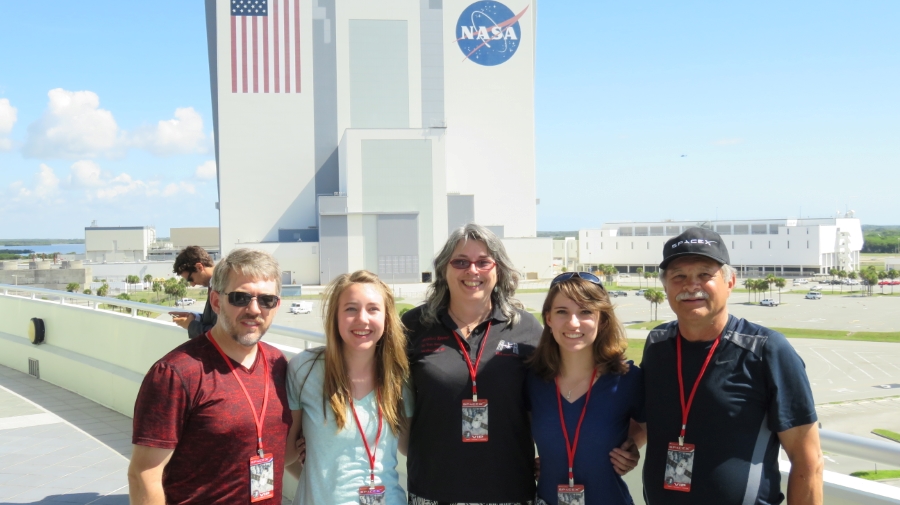
A team from McMinnville High School’s Engineering & Aerospace Sciences Academy (EASA) witnessed the SpaceX rocket explosion
at Cape Canaveral yesterday morning. Students, mentors and a teacher
from EASA traveled to Florida to see a student nanolab project lift off
to the International Space Station, where it was supposed to collect
data about how metals oxidize in space.
Less than three minutes after lift-off, the unmanned rocket blew apart in a fiery blast and disintegrated.
“We’re unsure exactly what happened,” said Jeff Jackson, an Intel
engineer who is also a project mentor for the EASA nanolab project.
“From our perspective, it looked like everything went fine and then
just about the time the first stage was supposed to disengage from the
rocket, it looked like there was an explosion, but it was so hard to see
from the ground.”
“It seemed almost surreal,” said student Deborah Jackson. “My dad
was looking through the binoculars and handed them over to me. I saw
debris, but I thought it was stage one disengaging. Then I couldn’t see
it, but I thought it was my skills as a tracker. I didn’t put two and
two together at first.
“It was more just shock,” she said.
“You learn more from a disaster or failure than you do when things go
well,” said teacher MaryBeth Kramer. Because there were no humans on
board, the students can focus on the project instead of the loss, she
said.
“Kids learn that what’s important is the journey of creating
something,” said Kramer. “It’s more than how the actual experiment
worked. The attitude there was let’s figure out what happened and how
we’re going to fix it. We’re moving forward.”
The nanolab project
is a microlab “about the size of a butter cube,” said Kramer. “It has a
programmable board with a camera that the astronauts just plug in like a
USB port.”
Student Jamie Graham, who also attended the launch and has been on
the nanolab team for two years, said the project design involved
“chemical, mechanical, electrical and software engineering. All parts of
the experiment were designed as a 3D Cad model, then prototyped before
being professionally manufactured and tested prior to being launched
into space.”
The device was designed to collect data and download it every three
days. Students in McMinnville were poised to track the data and compare
it to data collected from their control model.
Because the team made two models, the one for launch and one for
control, as well as prototypes, the students think it won’t be too
difficult to recreate the nanolab and wait for another launch.
“We’re still in the game,” said Kramer. “The students got a chance
to network with NASA people and even Buzz Aldrin was there. They’re
going to learn from this.”
“I’m still glad we were able to be there,” said Deborah Jackson. “It
was a unique and beautiful experience. Even though it was
disappointing.
“But we don’t do science because it’s easy.”
Submitted photo (from left) Jeff Jackson, Jamie Graham, MaryBeth Kramer, Deborah Jackson, and Ken Kramer.